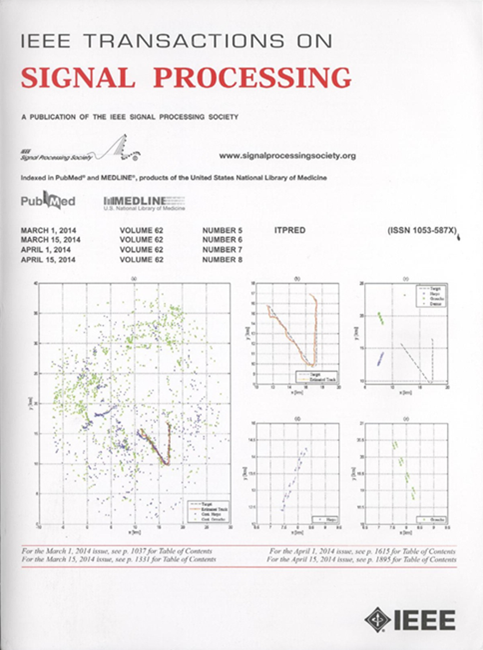面向边缘图信息瓶颈无线通信信号处理的鲁棒多维图神经网络
IF 5.8
2区 工程技术
Q1 ENGINEERING, ELECTRICAL & ELECTRONIC
引用次数: 0
摘要
信号处理对于满足未来第六代(6G)无线网络的高数据速率要求至关重要。然而,无线网络的快速发展带来了海量的数据流量,这阻碍了传统的基于理论的优化算法的应用。与此同时,传统的图神经网络(gnn)侧重于将输入压缩到顶点来更新表示,这往往导致它们无法有效区分输入特征,严重削弱了性能。在此背景下,设计高效的信号处理框架势在必行。此外,实际场景容易受到多径干扰和噪声的影响,导致接收到的信息与实际信息存在特定差异。为了解决这些挑战,本文将多维图神经网络(mdgnn)与边缘图信息瓶颈(EGIB)相结合,设计了一个鲁棒的信号处理框架。具体来说,mdgnn利用超边缘而不是顶点来更新表示,以避免不可区分的特征并减少信息损失,而EGIB鼓励提供关于输出的最小足够信息,以避免无关信息的聚集。数值计算表明,与现有框架相比,本文提出的框架在频谱效率(SE)和复杂度方面都具有优异的性能。值得注意的是,随着干扰噪声的增加,所提框架的SE性能逐渐趋于稳定。这表明所提出的框架在易受干扰的环境中具有出色的鲁棒性,特别是在与信道矩阵相关的无线策略中。本文章由计算机程序翻译,如有差异,请以英文原文为准。
Robust Multidimensional Graph Neural Networks for Signal Processing in Wireless Communications With Edge-Graph Information Bottleneck
Signal processing is crucial for satisfying the high data rate requirements of future sixth-generation (6G) wireless networks. However, the rapid growth of wireless networks has brought about massive data traffic, which hinders the application of traditional optimization theory-based algorithms. Meanwhile, traditional graph neural networks (GNNs) focus on compressing inputs onto vertices to update representations, which often leads to their inability to effectively distinguish input features and severely weakens performance. In this context, designing efficient signal processing frameworks becomes imperative. Moreover, actual scenarios are susceptible to multipath interference and noise, resulting in specific differences between the received and actual information. To address these challenges, this paper incorporates multidimensional graph neural networks (MDGNNs) with edge-graph information bottleneck (EGIB) to design a robust framework for signal processing. Specifically, MDGNNs utilize hyper-edges instead of vertices to update representations to avoid indistinguishable features and reduce information loss, while EGIB encourages providing minimal sufficient information about outputs to avoid aggregation of irrelevant information. We numerically demonstrate that compared with existing frameworks, the proposed frameworks achieve excellent performance in terms of spectrum efficiency (SE) and complexity under multiple signal processing tasks. Remarkably, as the interference noise increases, the SE performance of the proposed frameworks gradually stabilizes. This reveals the proposed frameworks have excellent robustness in interference prone environments, especially in wireless policies related to channel matrices.
求助全文
通过发布文献求助,成功后即可免费获取论文全文。
去求助
来源期刊

IEEE Transactions on Signal Processing
工程技术-工程:电子与电气
CiteScore
11.20
自引率
9.30%
发文量
310
审稿时长
3.0 months
期刊介绍:
The IEEE Transactions on Signal Processing covers novel theory, algorithms, performance analyses and applications of techniques for the processing, understanding, learning, retrieval, mining, and extraction of information from signals. The term “signal” includes, among others, audio, video, speech, image, communication, geophysical, sonar, radar, medical and musical signals. Examples of topics of interest include, but are not limited to, information processing and the theory and application of filtering, coding, transmitting, estimating, detecting, analyzing, recognizing, synthesizing, recording, and reproducing signals.
 求助内容:
求助内容: 应助结果提醒方式:
应助结果提醒方式:


